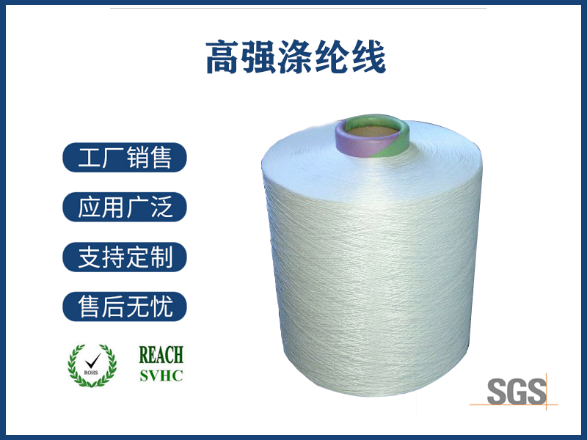發(fā)布時(shí)間:2025-01-07 08:12:25 人氣:5

Title: Understanding Polyester Filament Yarn: The Essentials Polyester filament yarn, a staple in the textile industry, is known by its English abbreviation “PET” which stands for Polyethylene Terephthalate. This versatile fiber has become ubiquitous in modern clothing fabrics and industrial applications due to its durability, versatility, and cost-efficiency. In this article, we’ll delve into the basics of polyester filament yarn, exploring what PET represents within the realm of textile manufacturing and why it is a favored material among both consumers and producers alike. The Composition of PET At its core, PET is a type of polymer made from the chemical reaction between monoethylene glycol and terephthalic acid. The resulting synthetic fiber possesses an impressive array of characteristics that make it suitable for various uses. Its resistance to stretching and shrinking ensures that garments maintain their shape over time, while its strength-to-weight ratio makes it ideal for producing robust yet lightweight materials. Furthermore, polyester filament yarn resists mildew and moth damage, contributing to a long lifespan for products made with this fiber. Why Choose Polyester Filament Yarn? There are several reasons why polyester filament yarn is preferred in both fashion and function. For one, its colorfastness means vibrant patterns and hues stay true wash after wash, making it a favorite choice for designers creating statement pieces. Additionally, because PET fibers can be easily blended with other natural or synthetic fibers, manufacturers have greater flexibility in creating fabrics with specific textures and properties. Another key advantage of polyester filament yarn lies in its environmental footprint. While not biodegradable, advancements in recycling technology have enabled used polyester garments and products to be reprocessed into new items. This closed-loop system reduces waste and encourages sustainability practices within the textile sector. Applications Across Industries From activewear to home furnishings, polyester filament yarn finds its way into numerous products. Its ability to mimic the feel of natural silk without the high maintenance requirements makes it popular in luxury apparel. Simultaneously, its resilience and ease of care make it perfect for everyday wear such as t-shirts and casual attire. In the world of home decor, polyester upholstery fabrics provide a durable solution that can withstand heavy use while maintaining a polished appearance. Moreover, the fiber’s quick-drying capabilities lend themselves well to outdoor furniture cushions and marine upholstery, where moisture resistance is crucial. In conclusion, understanding the significance of PET—the English abbreviation for polyester filament yarn—is essential for anyone involved in the fashion and textile industries. With its combination of strength, versatility, and sustainability credentials, it’s no wonder that polyester filament yarn continues to be a cornerstone of contemporary fabric production. Whether you’re a consumer seeking durable and stylish apparel or a manufacturer looking to create innovative textiles, PET offers a wealth of possibilities to explore.